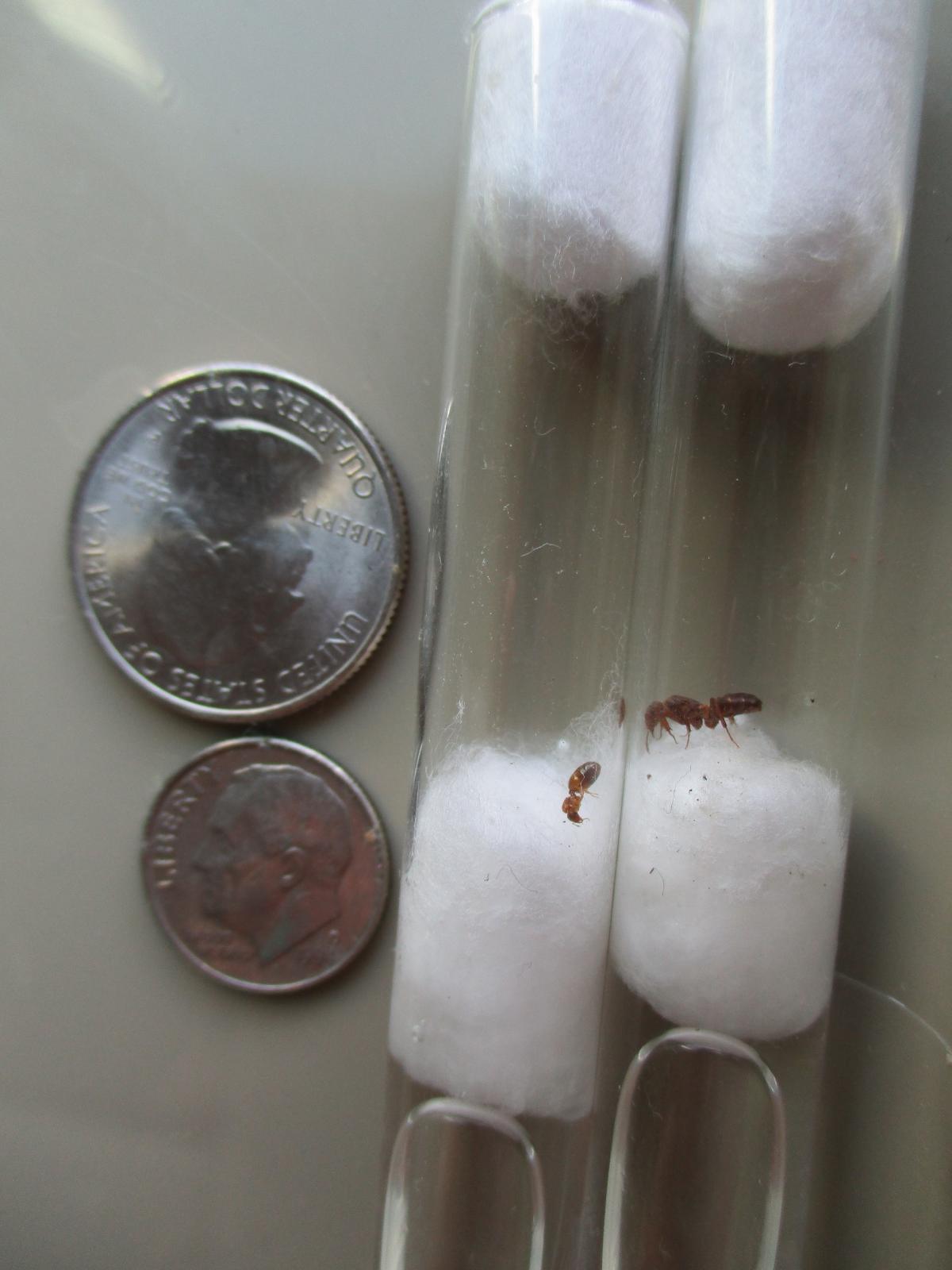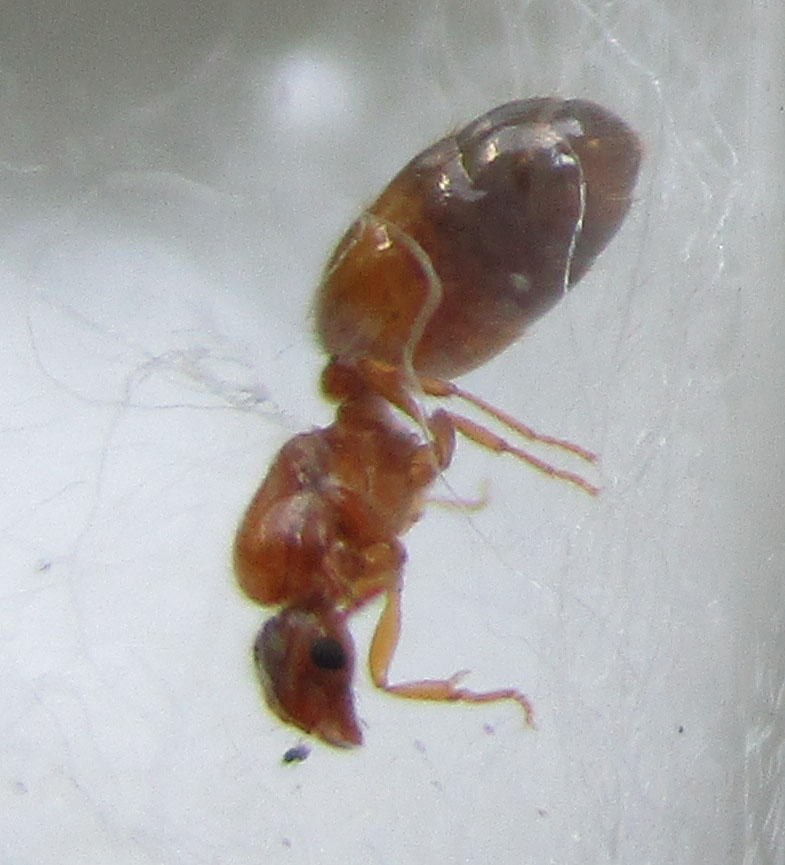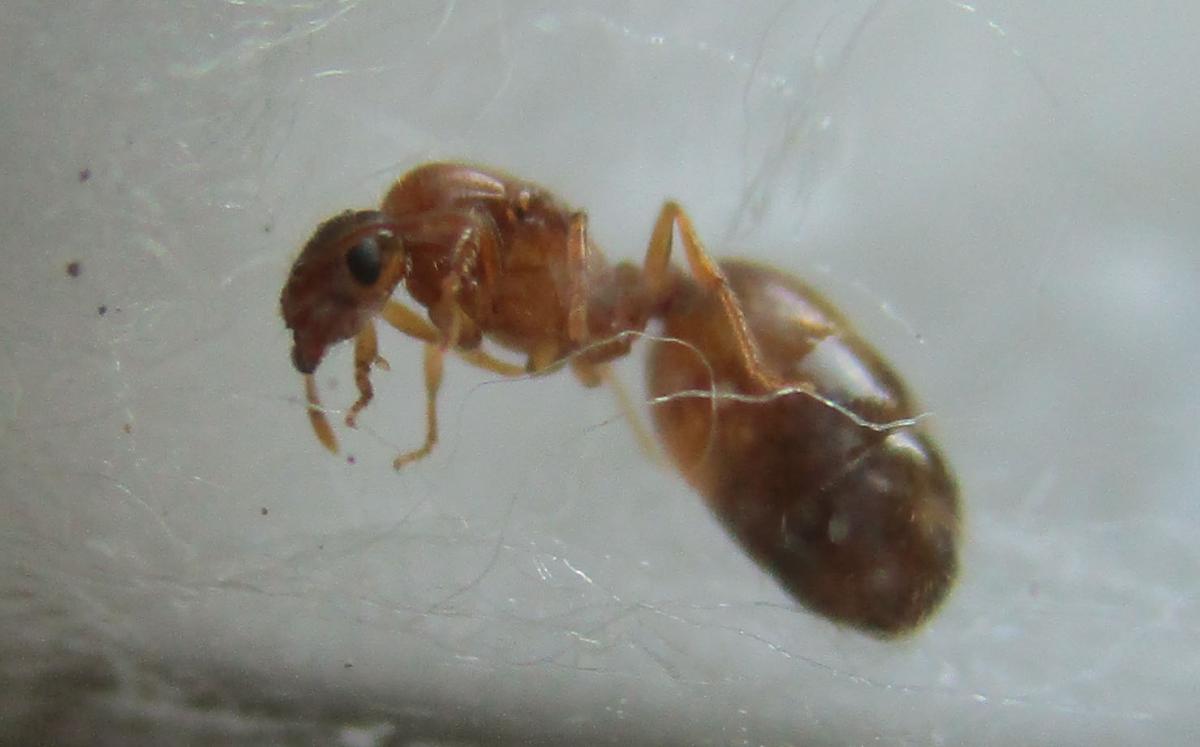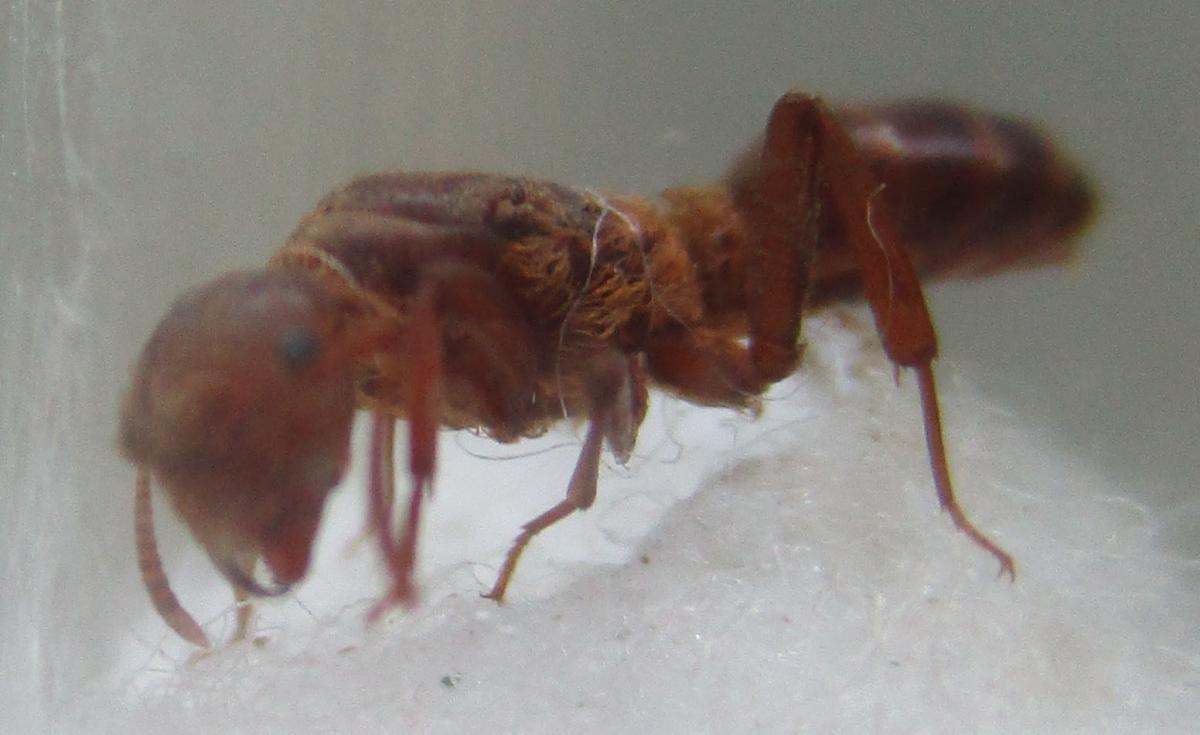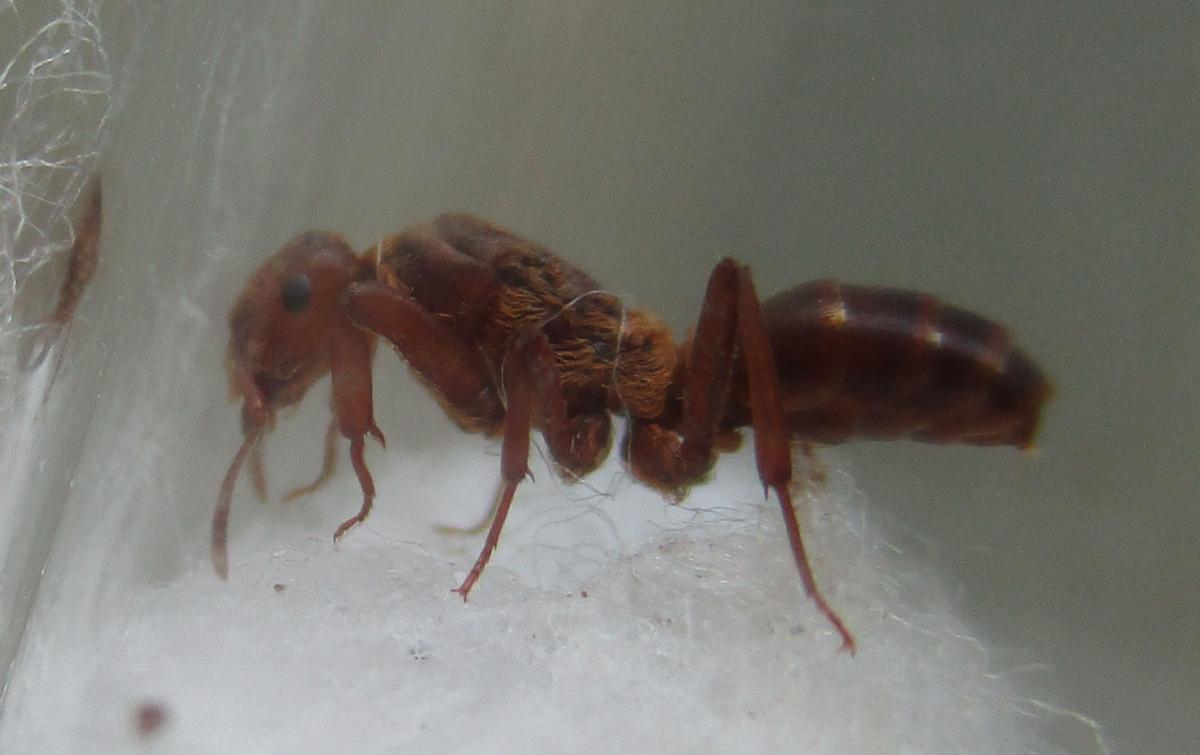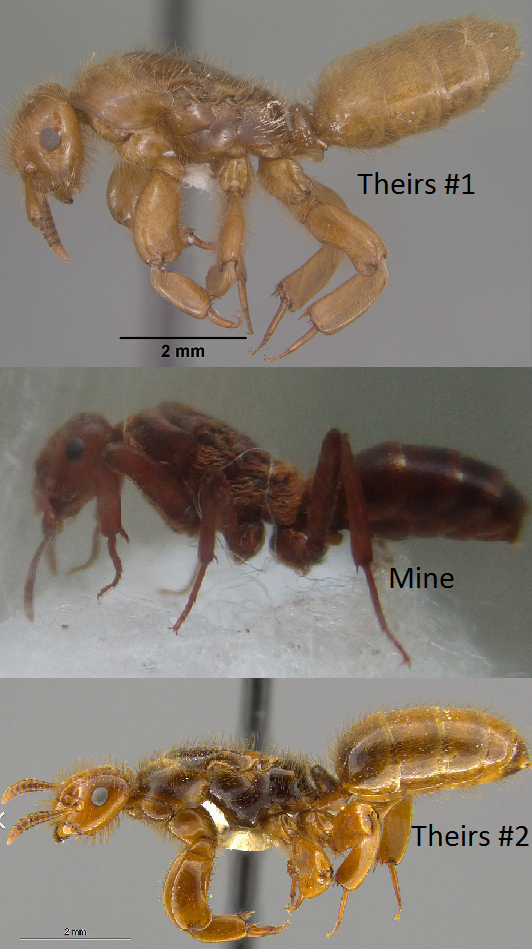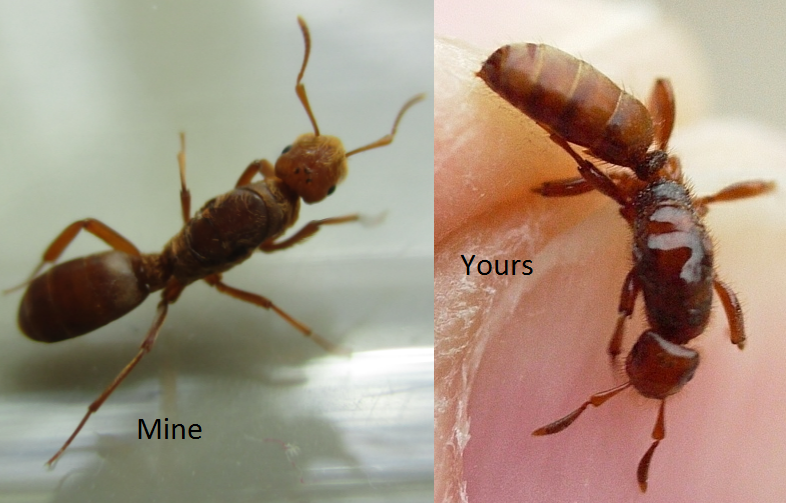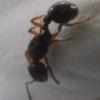Hi all,
This is my first post, so I apologize if the location is incorrect. If there's a better home elsewhere for this topic, please let me know and I'll see if I can move it.
I'm 33 now, and after about 12 hours of research into the ant-keeping hobby, I have finally captured what I believe are a few queen ants. One of the first recommendations that ant-keepers give is to have someone ID your queens. That is the purpose of this post.
These queens were captured while taking a stroll on a suburban home driveway in State College PA on 7/28/15. If you have any information, please let me know ![]()
Edited by Works4TheGood, August 1 2015 - 7:18 AM.





